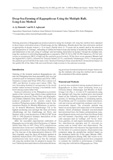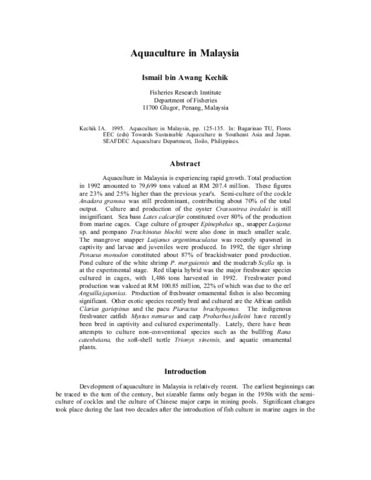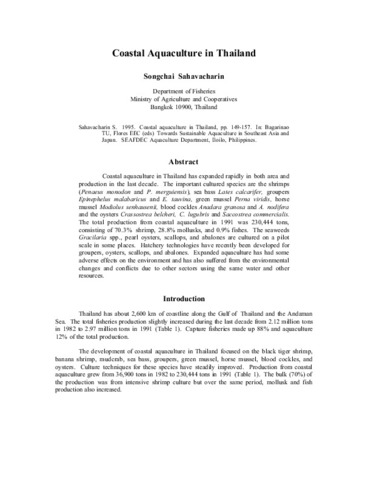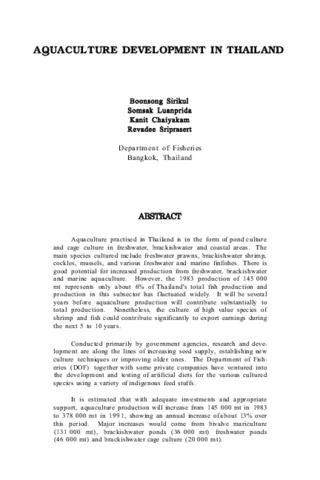Deep-sea farming of Kappaphycus using the multiple raft, long-line method

View/
Request this document
Date
2002Page views
431Metadata
Show full item recordCited times in Scopus
Share
Abstract
Farming practices of Kappaphycus seaweed planters using the multiple raft, long-line method were assessed in three major cultivation areas of Zamboanga del Sur, Mindanao. Results show that this cultivation method is appropriate in deeper waters (> 10 m deep). Family labor (6–70 years old) is usually used in the selection and preparation of ‘cuttings’, unloading of newly harvested crops and drying of seaweeds, while preparation and installation of the raft, tying of ‘cuttings’ and harvesting, hired labor is needed. Though the multiple raft, long-line method of cultivating Kappaphycus is expensive (PhP 45,742 to PhP 49,785) based on a 500 m2 raft, return on investment (ROI) is high and the payback period is short. Of the three areas assessed, Maasin had the highest ROI (218%), followed by Tictauan Island (212%), and finally Taluksangay (79%). Consequently, the payback period followed the same order. Seaweed farming in these areas showed a tremendous impact on the quality life of the fisher folk and contributed a high revenue to the national economy.
Suggested Citation
Hurtado, A. Q., & Agbayani, R. F. (2002). Deep-sea farming of Kappaphycus using the multiple raft, long-line method. Botanica Marina , 45(5), 438-444. https://doi.org/10.1515/BOT.2002.044
Subject
Taxonomic term
Collections
- AQD Journal Articles [1240]
Related items
Showing items related by title, author, creator and subject.
-
Aquaculture in Malaysia
Kechik, Ismail bin Awang. (Aquaculture Department, Southeast Asian Fisheries Development Center, 1995)Aquaculture in Malaysia is experiencing rapid growth. Total production in 1992 amounted to 79,699 tons valued at RM 207.4 million. These figures are 23% and 25% higher than the previous year's. Semi-culture of the cockle ... -
Coastal aquaculture in Thailand
Sahavacharin, Songchai (Aquaculture Department, Southeast Asian Fisheries Development Center, 1995)Coastal aquaculture in Thailand has expanded rapidly in both area and production in the last decade. The important cultured species are the shrimps (Penaeus monodon and P. merguiensis), sea bass Lates calcarifer, groupers ... -
Aquaculture development in Thailand
Sirikul, Boonsong; Luanprida, Somsak; Chaiyakam, Kanit; Sriprasert, Revadee (Aquaculture Department, Southeast Asian Fisheries Development Center, 1988)Aquaculture practised in Thailand is in the form of pond culture and cage culture in freshwater, brackishwater and coastal areas. The main species cultured include freshwater prawns, brackishwater shrimp, cockles, mussels, ...





